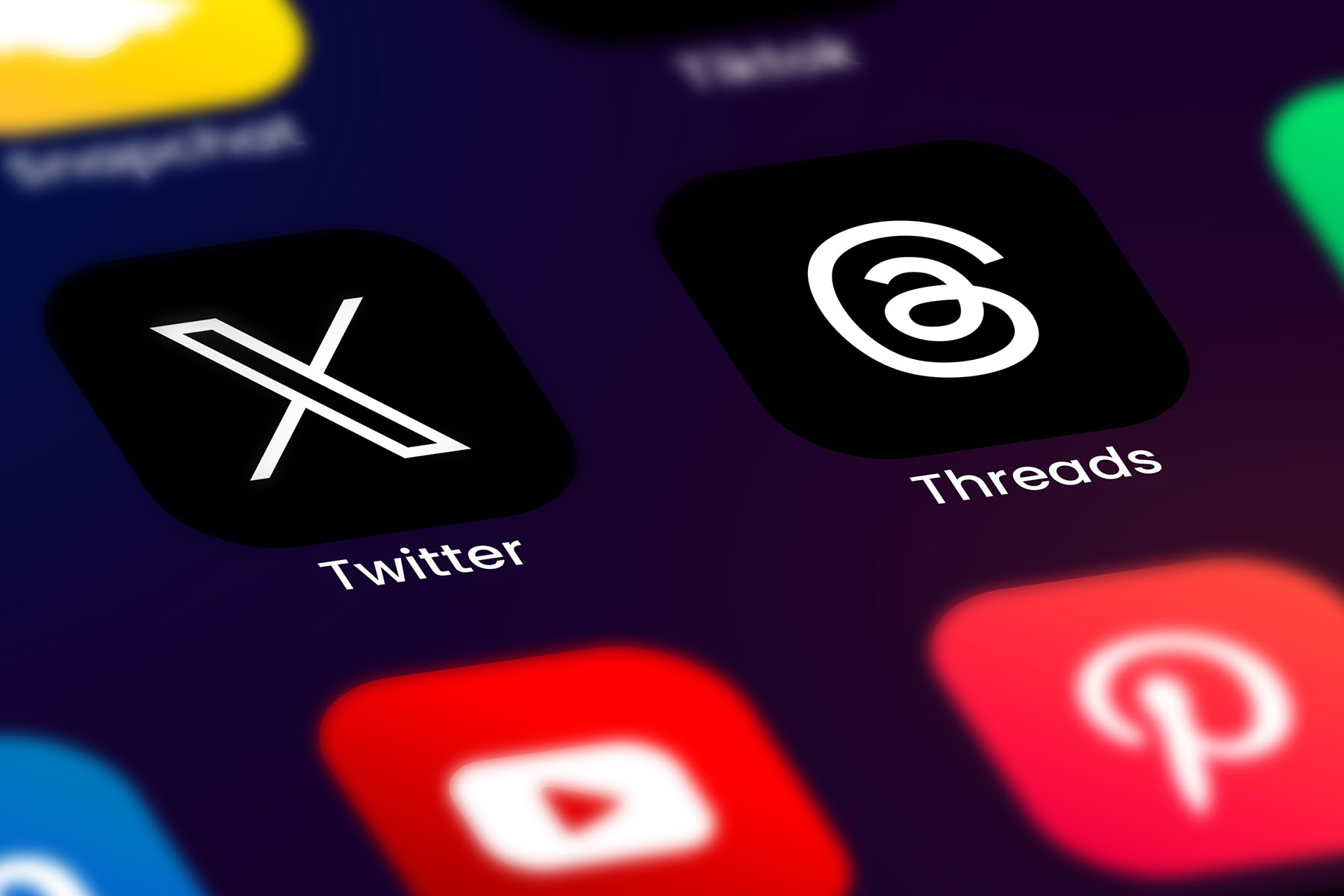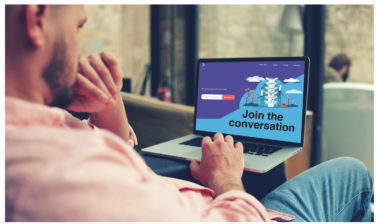Digital fireworks were launched just hours after the July 4th holiday in the U.S. with the official launch of Threads by Meta, a new platform that is a direct competitor of Twitter.
It should be of no surprise to anyone that a flurry of Twitter competitors is now entering the marketplace. Ever since Elon Musk’s purchase of Twitter, a target has been on the back of one of the original and most polarizing social platforms.
Musk’s controversial antics and unilateral policies have catalyzed a mini diaspora to Twitter clones such as Bluesky, Post, Spill, and Mastodon. All have their merits, but none carry the backing of one of the world’s most powerful social conglomerates, Meta.
What’s Threads All About?
Threads, a micro-blogging social platform (and Twitter clone), looks and feels very much like the early days of Twitter with one big difference—it allows users to post a maximum of 500 characters. The feature set is currently spartan; for example, you cannot hashtag, you cannot Direct Message, you cannot see the Threads/Tweets of the people you follow, you cannot edit a Thread, and there is no way to search beyond a user’s handle, although I have found that if you type the name of a reasonably well-known person, their handle tends to show up.
Because you log in using your Instagram credentials, the signup process might be the most frictionless of any social network. The platform allows you to import your picture, bio, and a list of Instagram followers. This is a big deal and probably a big reason the platform was able to attract more than 10 million users in its first seven hours of existence.
But the birth of this new challenger to Twitter presents one big question: Why now, Meta?
Meta could have made the move to create a Twitter competitor at any time, but I believe they chose to do so for the following reasons.
- In recent days, Elon Musk instituted a policy capping an individual’s consumption of Tweets at 600. Even for non-power-users, 600 tweets with an agile scrolling thumb can fly by in a heartbeat.
- Twitter has gone from a hyper-paced, news-breaking, joke-slinging, social-commentary remarking hotspot, to a place of hatred, bigotry, racism, and vitriol. Mark Zuckerberg and Elon Musk already reportedly want to fight each other so it stands to reason Zuck (as he is known on Threads), would not be shy in firing a direct shot across the bow of Musk’s Twitter—this time in the form of a directly competing platform.
- And finally, Threads could easily be viewed as training kindling for Meta’s AI. Twitter’s firehose, which was historically cheap and readily available, has now become expensive and increasingly throttled down. For example, Google Search, which relies heavily on sites such as Twitter, Reddit, and Quora to populate answers in the search engine results pages, cut indexed Tweets back to 180 million, down from 471 million. Although that’s Google’s specific problem, Meta’s AI is no doubt using data from the Twitter firehouse that Musk is now cracking down on. And a lack of access to the firehose negatively impacts Meta’s ability to train its own AI. Enter Threads.
How Will Meta Achieve Staying Power for Threads?
Meta believes there is an opportunity to capitalize on the Twitter diaspora. Twitter is reportedly losing anywhere from 20-50 million users because of its new owner and his controversial decisions. Current monthly active Twitter users fall somewhere between 210 and 260 million people, both in the U.S. and globally.
So, if Threads can sign up 100 million users in the U.S. in the next year (and more than 40% of these users remain active), Threads will have cemented its staying power.
One day after launch, Threads announced it had surpassed 30 million users, so this not only seems feasible, but highly likely. For context, it took Instagram two and a half years to reach 100 million users.
The only difference between Threads and other existing platforms is that it is not currently offering users anything novel. Unless you call a collegial experience on a social platform novel these days.
Helping to spark Thread’s launch was a star-studded list of socially active celebrities including Shakira, Tom Brady, Jamie Oliver, House of Highlights, The Kardashians, Karlie Kloss, Steph Curry, Jonas Brothers, Mr. Beast, Shaquille O’Neil, Marshmello, Oprah, and Gordon Ramsay. Collaborating with and probably incenting a list of influencers with this degree of cache makes it clear that Threads is trying to cover all their bases—casting a wide net related to interest, subject matter, even socio-economic relatability.
What Does This Mean for Advertisers? What Does This Mean for Pharma?
It is hard to close the door on Twitter because there have been so many positives related to the platform over the years. That said, even the staunchest Twitter apologists must agree that the conversation today (I am not referring to unliteral brand, journalist, or investor posts, but actual conversations between and among Twitter users), has devolved into something almost insidious. This of course calls brand safety into question. Still, it is critical for a brand to be on Twitter, especially a pharmaceutical brand. In a world where 50% of America gets their news from social media and 30% only get their news from social media, Twitter is not a platform you can afford to divest from. Perhaps until now.
Historically, not being on Twitter meant not being able to connect with a large swath of Americans, many of whom desperately need critical health information in a timely fashion, which is exactly what Twitter can provide. Now, however, Threads offers a more white-collar alternative. White collar in the sense that conversation is still positive, the skies are still blue, and the product still has lots of runway in which to evolve and grow—everything seems more civilized from both a feature and experience perspective.
Because Threads has, at least for the time being, adopted the same policies that govern Instagram’s user base, you must imagine that it will continue to be more inclusive than Twitter. Plus, the number of posts you can consume on Threads has no limit and there are currently no explicit rules against data scraping. That said, it is highly unlikely that Threads will make their data available to anyone other than Meta (and maybe advertisers or agencies as an alternative revenue stream, which is something Meta is actually looking for).
Threads is technically an Instagram companion app. According to Meta, all this means is that you need an Instagram account to access Threads and you need to be logged in to that account. So right out of the gate, Threads is making it clear that protecting their platform’s data is a priority. As Threads is also currently unavailable in Europe due to data privacy regulations, you can also read between the lines to see this truly is Meta’s attempt to create their very own AI training playground.
At the end of the day, Threads is yet another copycat in a long line of Meta copycats—but is that really such a bad thing? It is white-collar Twitter: a cleaner, friendlier version of the platform we all know and love.
Currently, 143 million Americans have Instagram accounts and with the click of a button can frictionlessly create one on Threads as well. Search and discoverability are the two biggest issues. Right now, search is limited to a user’s Instagram social graph, as opposed to the murky algorithmic ether of Twitter. Content discoverability, also like search, is based on the social graph as opposed to the wildly popular content graph of TikTok. As we all know, people love Tweeting into the ether, so these are two key experiences. If Threads can figure out a better search functionality, plus a TikTok-esque content graph, the sky is the limit.
It will be fascinating to watch the platform continue to grow and evolve, especially as, down the road, it introduces some form of paid advertising for brands. I believe this will come, because with that many users, the revenue options are massive.
Until then, enjoy the royal rumble brewing on smartphones with the launch of Threads and let’s watch closely as the battle wages between the newest and shiniest platform and Twitter.










